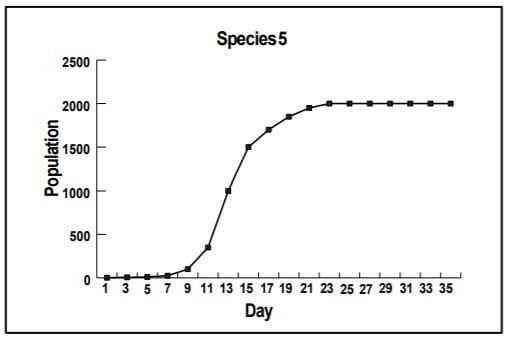What, if any, benefit does a prescribed fire have on a habitat in Florida?
An animal that only eats plants is called a :
herbivore, primary consumer
What is the rule of ten?
Each tropic level can only give 10% of its energy to the next level
True or false: Invasive lionfish compete with native fishes.
True
Which of these is not a benefit of a forest?
1) Open space for human development
2) habitat
3) erosion reduction
4) carbon sequestration
1) Open space
What are several interacting species called?
Community
What is the process that turns organic carbon into inorganic carbon?
Cellular Respiration
Which of the following should be considered for determining the impacts of a business decision on the local environment?
a) The price of the investment
b) The company's contribution to non-profit organizations
c) the effect the decision will have on local wildlife
d) The efficiency of the powers used to create the good.
c
True/False When scientists evaluate the validity of a scientific claim, the general public should have a chance to influence the results of the study.
False
In aquatic systems, which zone tends to have the most diversity of life?

Photic zone
What is the difference between a food web and a food chain?
A food chain is a simplified food web. It shows one pathway of the relationship, a food web is more complicated and shows more interworking's of the ecosystem.
If I released a new species to Florida and it did not have any natural predators here, what might I expect to happen?
it become invasive and breed a lot.
If there is 10,000 joules of energy available at the producer level and 10 joules available at the tertiary consumer level, how much energy is available for secondary consumers?
3 - 10 joules
2 - ???
1 - ???
Producer - 10,000 Joules
100
What is a decomposer?
Which of the following contributes the most energy to an ecosystem?
Consumer, Predator, Producer, Parasite, Decomposer.
Producer
What is the name for an animal that eats another animal and what level is it?
Predator, secondary consumer
what does the flat line at the top of this graph mean?

The population has reached carrying capacity.
Name two ways to increase the amount of carbon in the carbon cycle.
Deforestation, burning fossil fuels, burning goods, decreasing the number of plants, etc
What is an autotroph?
Organism that can make its own food. Captures energy from the sun or chemicals to produce its own food from inorganic compounds. AKA producer.
What is a heterotroph?
Organism that obtains food by consuming other living things. AKA consumer.
What percent of the total energy from the first level (producers) is available for the top tropic level?

less than 1%, 0.1%
What is sustainable development?
Using resources without destroying or depleting them while also providing for human needs.
What is the typical order of return of plants during succession after an area has been disturbed by a natural process (ex. eruption, hurricane)?
Smallest to biggest
lichens -> grasses -> shrubs -> trees
What is sustainability?
the use of a resource that does not cause long-term depletion. It uses resources in a way where they are not degraded.
What is a cost-benefit analysis and how does it relate to environmental decision making?
A process of comparing and contrasting two potential solutions where the total cost of the initiative and the total benefits are compared. It relates as land managers, politicians and more use this method to compare two land management options (ex. solar energy vs. wind energy, dams vs. species dependent on warm water/migration)